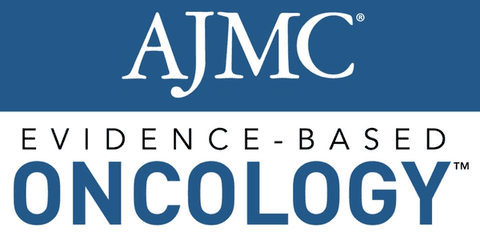Article
Zanubrutinib Shows Promise in Marginal Zone Lymphoma at EHA
Author(s):
Research at the European Hematology Association featured zanubrutinib as monotherapy and in combination with rituximab, and well as evaluations of biomarkers that signal responses.
Zanubrutinib, the Bruton tyrosine kinase (BTK) inhibitor, produced a high response rate in an early-phase study of 20 patients with relapse or refractory marginal zone lymphoma (MZL), according to data presented today at the European Hematology Association Virtual Congress.
The study was one of several that BeiGene is presenting at EHA, which concludes Sunday.
“We’re pleased to share clinical results from several trials in our broad hematology development program at this year’s EHA. Zanubrutinib demonstrated encouraging efficacy and safety in multiple indications, including R/R MZL, which expands on data presented previously,” Jane Huang, MD, chief medical officer for hematology at BeiGene, said in a statement. “We look forward to receiving data from the potentially registration-enabling phase 2 trial of zanubrutinib in R/R MZL, which has completed enrollment.”
Zanubritinib in R/R MZL. Data were from the phase 1/2 cohort enrolled in an open-label trial of patients with B-cell malignancies. The 20 patients included 9 with extranodal disease, 5 with nodal disease, and 6 with splendic disease. At data cutoff on January 29, 2020, with a median follow-up of 27.1 months, 12 patients remained on treatment. Overall response rate (ORR) was 80% (95% CI: 56.3-94.3), with a complete response (CR) of 15% and a partial response (PR) rate of 65%. Of note, patients with nodal MZL had ORR of 100% (95% CI: 47.8-100.0). The median time to response was 2.8 months, and at 18 months, 66.2% of responders were still responding to treatment (95% CI: 32.4-86). Progression-free survival (PFS) at 24 months was 59.4%. Common adverse events of grade 3 or above were neutropenia (15%), anemia (10%), and pyrexia (10%).
Biomarkers in R/R non-germinal center B-cell like diffuse large B-cell lymphoma (DLBCL). Researchers examining data across 4 different clinical trials found different biomarker patterns for patients who responded to monotherapy compared with those who responded to combination therapy in R/R non germinal center B-cell like (non-GCB) DLBCL. Two trials looked at zanubrutinib as a monotherapy and 2 looked at the BTK inhibitor in combination with an anti-CD20 antibody. A total of 121 patients were included in the analysis; 79 from the monotherapy trials and 42 from the combination trials. Across all 4 trials, the ORR was similar, with an average of 29.8% and a median PFS ranging from 2.8 to 4.9 months; the median overall survival (OS) was 8.4 to 11.8 months.
Among the 49 patients with GEP-confirmed activated B-cell DLBCL, the ORR was higher (42.9%) than the non-GCB DLBCL, and was similar in monotherapy (42.1%) and in the combination trials (45.5%). Among 56 non-GCB patients with HTG gene expression profiles, PAX5 expression was higher among those responding to monotherapy than non-responders; PIM1, BCL2, and FOXP1 expression was more common in those responding to combination therapy than those not responding. Patients with double expressions of MYC and BCL2 tended to have higher ORR (61% to 29%) and longer PFS, 5.2 vs 3.6 months; and OS, 10 vs 7 months. In 77 patients who had next-generation sequencing (NGS) data, those with CD79B mutations had higher ORR than those without, 60% vs 26.9%.
Using zanubrutinib with rituximab in R/R non-Hodgkin’s lymphoma (NHL). A single-arm phase 2 trial combining zanubrutinib and rituximab in R/R NHL enrolled 41 patients, including 20 with non-GCB DLBCL who had previously had anthracycline with or without rituximab, 16 with follicular lymphoma with at least 1 prior therapy, and 5 with MZL with at least 1 prior therapy.
After a median follow-up of 10.28 months, 14 patients were still in the study:
- ORR in the patients with non-GCB DLBCL was 35% (95% CI, 15.4-59.2); 1 patient had a complete response (CR) and 6 had partial responses (PRs). PFS was 3.38 months.
- ORR in patients with R/R FL was 56.3% (95% CI, 29.9-80.2); 3 had CRs and 6 had PRs; PFS was not estimable (NE).
- ORR in patients with R/R MZL was 60% (95% CI, 14.7-94.7); 1 had a CR, 2 had PRs, median PFS was NE.
- 97.6% of patients had at least 1 adverse event (AE), with the most common being decrease neutrophil count; grade 3 or higher AEs were seen in 46.3% patients.




